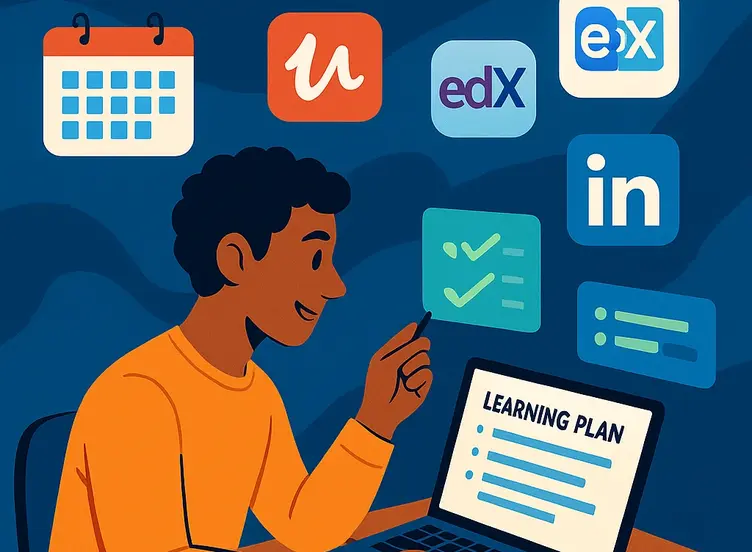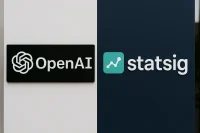I. Introduction: Upskilling Is No Longer Optional
In today’s fast-paced job market, what you know today may be obsolete tomorrow.
Technological shifts, AI disruption, and hybrid work models have transformed the professional landscape. Employers now value agility, digital fluency, and continuous learning more than ever before. According to LinkedIn’s 2025 Workplace Learning Report, over 76% of professionals feel pressure to upskill to stay relevant.
Fortunately, you don’t need a new degree or a $10,000 bootcamp. Online learning platforms are bridging the gap—offering flexible, affordable, and targeted ways to future-proof your career.
Let’s break down how to upskill smartly, strategically, and sustainably using today’s best e-learning tools.
II. Why Upskill with Online Learning Platforms?
Here’s why millions are turning to digital platforms instead of traditional education:
✅ Flexibility
Learn anytime, anywhere—on your schedule.
✅ Affordability
Many platforms offer free courses or affordable monthly subscriptions.
✅ Industry-Relevant Skills
Courses are designed by companies like Google, Microsoft, and IBM, not just academics.
✅ Stackable Credentials
Earn certificates, badges, and even micro-degrees you can add to your LinkedIn profile or CV.
✅ Real-World Application
Many courses are project-based, preparing you for actual job tasks—not just theory.
III. Top Online Learning Platforms to Consider
| Platform | Best For | Key Features |
|---|---|---|
| Coursera | Business, Tech, Data | University & corporate partnerships, certificates, guided projects |
| LinkedIn Learning | Soft skills, Business, Leadership | Personalized learning paths, certificate sharing to LinkedIn |
| edX | Academic disciplines, IT, Project Management | MicroMasters, university content, degree options |
| Udemy | Tech, Design, Freelancing | Affordable one-off courses, huge library |
| Skillshare | Creative careers, Entrepreneurship | Short, creative-focused classes, community-based learning |
| Google Career Certificates | IT Support, UX Design, Data Analytics | Employer-recognized credentials with real-world tasks |
| Pluralsight | Software engineering, Cloud, DevOps | Skill assessments, curated paths, hands-on labs |
Choose based on your goals: Are you switching careers, climbing the ladder, or expanding a side hustle?
IV. Step-by-Step: How to Upskill Online Effectively
1. Identify the Right Skill to Learn
Ask:
- What skills are trending in my industry?
- What are the common requirements in job postings I want?
- Where is my current knowledge falling short?
Use tools like:
- LinkedIn job filters
- WhatJobs job descriptions
- Google Trends + Coursera Skill Reports
2. Choose the Right Platform and Learning Path
Not all platforms serve all learners equally. For example:
- Want a structured path with certification? → Try Coursera or edX
- Looking to improve soft skills? → LinkedIn Learning
- Need to learn a technical skill fast? → Udemy or Pluralsight
Many platforms now offer career learning tracks (e.g., “Become a Data Analyst”)—perfect for clarity and momentum.
3. Set SMART Learning Goals
Upskilling can become overwhelming. Break it down:
- Specific: “Learn SQL for data queries”
- Measurable: “Complete 3 modules in 2 weeks”
- Achievable: “Study 30 mins after dinner, 5x a week”
- Relevant: “Skill aligns with marketing analyst roles”
- Time-bound: “Finish by Aug 30”
Track your progress through:
- Course dashboards
- Personal calendars
- Habit trackers
4. Apply What You Learn Immediately
Knowledge without practice doesn’t stick.
Ways to apply learning:
- Use GitHub to publish code from tech courses
- Start a blog to explain what you learned
- Volunteer to run a project at work using your new skills
- Freelance or consult in your newly acquired area
Many top learners document their learning journey on platforms like LinkedIn or Medium—this builds credibility and community.
5. Showcase Your New Skills
Don’t keep your growth to yourself.
- Add certificates to your LinkedIn profile
- Update your résumé with new skill categories
- Create a portfolio showcasing before/after project work
- Use “Open to Work” features on WhatJobs or LinkedIn to highlight new specialties
Employers value evidence of initiative. Don’t just say you’re adaptable—show it through your learning activity.
📢 Need to Hire Fast?
Post your job on WhatJobs and reach thousands of active job seekers across the U.S. Whether you’re hiring remote, hybrid, or on-site get the right talent, faster.
Post a Job NowV. Common Mistakes to Avoid
Even the most motivated learners can trip up. Watch for these:
- Shiny object syndrome: Jumping from course to course without depth
- Overlearning, under-doing: Watching videos without applying the skills
- Ignoring reviews and ratings: Some online content is outdated—choose wisely
- Burnout from unrealistic schedules: Learning is a marathon, not a sprint
VI. Free vs Paid Courses: What’s Worth It?
Many high-quality courses are free. But sometimes, paying for:
- Certificates
- Graded assignments
- Career coaching
…can add value when job hunting.
💡 Tip: Start free, then upgrade if you’re serious about the certification path.
Some platforms also offer free trials or scholarships—take advantage of those before committing.
VII. Final Thoughts: Learning Is the Ultimate Career Investment
In a world where skills evolve faster than job titles, online learning is your career insurance.
Whether you’re preparing for promotion, switching industries, or staying competitive in AI-driven roles, your ability to learn is your superpower.
The good news? You no longer need a classroom, loan, or five-year plan. All you need is intention, internet, and a few hours a week.




